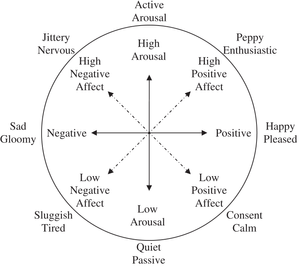Category: Article
#Successful?
As I’ve struggled to think of a topic to kick off my sophomore year blog series, I’ve scanned over practically every YouTube video and online article trying to find some sort of inspiration to come up with the next hot topic. While pop culture is at a stand still at this point with the media hiding under every surface because of the heat from “Occupy this, that, and the next big city,” I’ve decided that I’m going to switch up my role as a writer.
Rather than informing you, my lovely audience, about some irrelevant pop culture icon or explaining random biological processes, I’m going to create my own rant about success. However, this wouldn’t belong in the nerve blog if it was just some college student rambling about his own opinions that nobody cares to listen to, so for that reason, I’ll tie in a norepinephrine reference to make it real ‘neuroscience-y.’ So if you’ve made it through my introduction and are interested in seeing what I have to say, please continue. But, if your already making disgruntled looks at your computer screen after the first two paragraphs, now is the time for you to return to Facebook or whatever else you may be doing… More
Behind Closed Eyes: An Ayahuasca Experience

Ayahuasca is found to produce life-changing visions but can it also produce life-changing cures?
"As I closed my eyes, images - if they can be called such - began racing at an ever-increasing speed before me. Swirls of colors, shapes, forms, textures and sounds simply overpowered me to the point where I became immobile. Like many others before me, no doubt, I became somewhat frightened. What had I let myself in for? When I opened my eyes, the phantasmagoria of forms vanished, and I saw myself in the same room with the others"
Donald M. Topping's description is very similar to the accounts many others have given. He brought up many questions on the vividness of visions produced after his very first ingestion of the hallucinogenic brew Ayahausca. What underlying brain mechanisms allow potentially healing, uplifting and fearful experiences to occur behind closed eyelids? That is what Draulio B. de Araujo and others sought out to find. More
Gossip Can Influence Perception
How you feel influences what you see, it is not just what you see that influences how you feel; a top down approach to understanding the visual system.
Affective Circumplex: Affect can vary in terms of valence (positive/negative) and arousal (high/low).
A great analogy for understanding how affect (the experience of an emotion) influences perception is to think of affect as a spotlight, or a source of "attention" that sheds light on the external world. This is known as a top-down process because the cortical and sub cortical levels of the brain directly influence what one externally experiences. This is opposed to a bottom-up process wherein external stimuli influences processing in the brain (an example of this process would be hearing something hit the floor behind you and immediately shifting your attention to that object). The brain uses both of these processes interchangeably, but it has only been recently that a top-down understanding of the visual system (a system that has classically been believed to be primarily regulated by external stimuli and how such stimuli influence attention) has been accepted. Many studies by Lisa Feldman Barrett and the Interdisciplinary Affective Sciences lab at Northeastern University seem to have proved strong evidence against the popular claim that the bottom-up system is the sole means by which perception can be influenced. More
From Skin Cells to Brain Cells
As much fun as I had exploring psychology last time I set out to write a blog post, this article from Science Daily caught my eye last week and I had to revert to my biology-related posting habit. Evidently, researchers at Oxford in the UK are using skin cells to grow induced pleuripotent stem (IPS) cells to use in their study of Parkinson’s Disease. What’s so useful about this technique is that skin cells are easily accessible, in contrast to the hard-to-reach tissues of the brain. With the skin cells obtained, the scientists plan to grow dopaminergic neurons and work on techniques for early detection of PD, perhaps finding ways to diagnose it before patients start showing symptoms. The skin cells will be from early-stage Parkinson’s patients, so they can be compared to the dopaminergic cells of healthy individuals to determine where things go wrong in the neurons affected by the disease. More
Can the Mind Control the Brain?
Research has been conducted that proves that our thoughts can control the rate of firing of neurons in our brain. This research reveals the crucial advancement of brain-operated machines in the field. John P. Donoghue at Brown University has conducted research that uses neural interface systems (NISs) to aid paraplegics. NISs allows people to control artificial limbs; individuals simply need to think about commanding their artificial limbs and signals are sent down from their brain to control the movement of these limbs! This great feat is not the only applicable result of current research done by brain-machine interfaces. Dr. Frank Guenther of Boston University uses implanted electrodes in a part of the brain that controls speech to tentatively give a voice back to those who have been struck mute by brain injuries. The signals produced from these electrodes are sent wirelessly to a machine that is able to synthesize and interpret these signals into speech. This is specifically useful for patients suffering from locked in syndrome, wherein an individual with a perfectly normal brain is unable to communicate due to specific brain damage, and thus allowing these individuals to communicate with the world! These discoveries are not only incredibly useful, but they also reveal the astonishing feats that the field of computational neuroscience is accomplishing in the world today.
On-line, voluntary control of human temporal lobe neurons
The Magic Facebook Mirror
"Magic mirror on the wall, who is the fairest one of all" says the evil Queen of Snow White and the Seven Dwarfs. I don't deny that growing up on Disney gave me a somewhat skewed sense of reality at times. Wouldn't it be nice to all have our own magic mirrors, constantly reminding us how wonderful and beautiful we are in the midst of the stress that is life?
A recent study by researchers at Cornell University have shown that we may actually have such a magic mirror - Facebook, as fate would have it. There are varying opinions concerning internet use on our personalities, but this study shows that Facebook can have a short term positive effect on self esteem. More
Somewhere Over the Brainbow
Because of the brain's amazing and incomprehensible complexity, there are billions of neurons that connect and network all the major areas of the brain with the small intricate parts as well. So how can we distinguish one of these neurons from the billions of others?
Well, within the past five years more advanced techniques have been discovered and used on various organisms. The most prevalent, and probably the most revolutionary, has been staining. This process was pioneered in the late nineteenth century by Camillo Golgi and allowed for the staining of whole, random cells.
Since then, much progress has been made and today the viewing of even more complex and minute parts that make up the brain is possible. One extraordinary technique was developed by a team of Harvard researchers a few years ago, and it is truly beautiful.
Known as the Brainbow technique, these investigators were able to use genetics to visualize complete neuronal circuits in unprecedented detail. Up to four differently colored fluorescent proteins were used, generating a palette of 100 distinct hues that labeled individual neurons.
 Here are the fluorescent proteins in their full glory illuminating the many neurons that make up the brain of a mouse. More
Here are the fluorescent proteins in their full glory illuminating the many neurons that make up the brain of a mouse. More
A Peek at Parkinson’s: What’s New for the Old?
With the Pancakes for Parkinson’s event at Boston University nearing, on April 2nd, I thought it would be a good time to check up on the latest in Parkinson’s research.
Firstly, Parkinson’s Disease (PD) is a motor disorder that affects dopaminergic neurons of the brain, which are necessary in the coordination of movement. Onset is usually around age 60, starting with symptoms including tremor, stiffness, slowness of movement, and poor balance and coordination. While current treatments can help alleviate the symptoms in patients, none provide a cure.
Second off, the mission of the Michael J. Fox Foundation for Parkinson’s Research and other support groups is to find better treatments for those suffering from the disease. With the Baby Boomer generation entering late adulthood and old age, more research needs to be done to better understand the disease and help those with it find relief. Consider stopping by the GSU Alley for some pancakes to show your support for the Foundation and its cause next month!
Ranging from studying food intake to using technology, many approaches have been used in PD research. More
Dr. Kent Kiehl Dabbles in Psychopathology
Crime is a trillion-dollar-a-year problem with the average psychopath convicted of four violent crimes by the age of forty. Although psychopathy is one of the least-funded areas of psychology, Dr. Kent Kiehl, one of the leading investigators in this field, hopes to defy this standard.
In January 2007, he requested to have a portable fMRI brought into the Western New Mexico Correctional Facility; the first fMRI ever brought into a prison. Kiehl hopes to test his theory that psychopathology is caused by a defect in the paralimbic system, which is involved in processing emotion, inhibition, and attention control.
 More
More
Tumors on the Brain

August 25, 2009 marked the day that America, and most importantly Massachusetts, lost one of its greatest senators, Ted Kennedy. Kennedy was diagnosed with a type of brain cancer called glioblastoma multiforme (GBM) in May 2008 after suffering from a seizure. GBM is a tumor formed in the glial, or supportive, brain cells; there is no current evidence for a genetic predisposition to this type of cancer. The American Cancer Society believes that 21,000 Americans are diagnosed with brain tumors, and about 10,000 are GBMs. They are the most aggressive and common type of brain tumor, which are resistant to many types of treatments. Only 3% of patients diagnosed with these tumors generally survive five years after diagnosis.
Almost two years after Kennedy’s death, doctors are using the drug Avastin to treat GMBs. Avastin blocks the growth of new blood vessels, a necessary component for the survival of tumors. More
